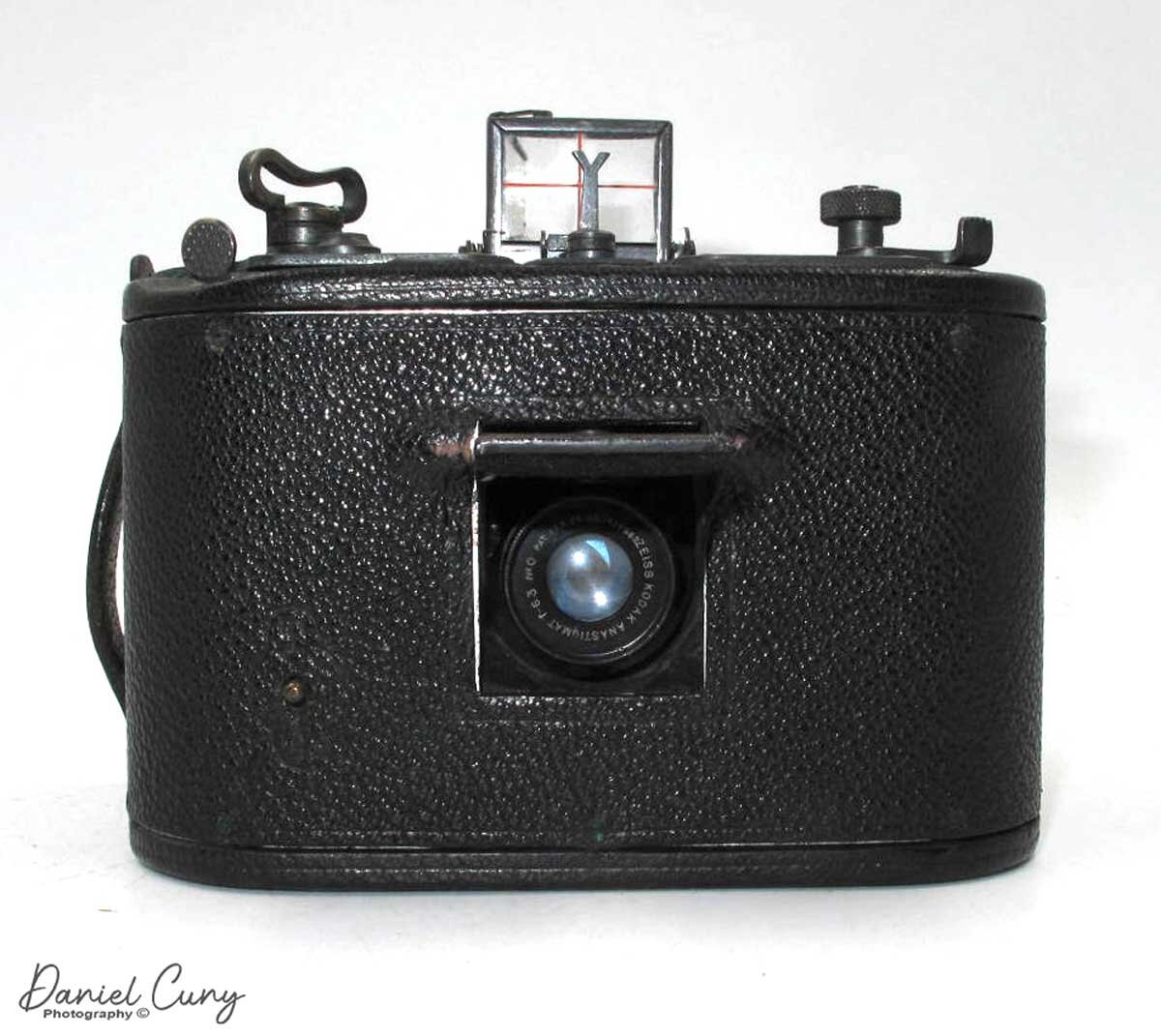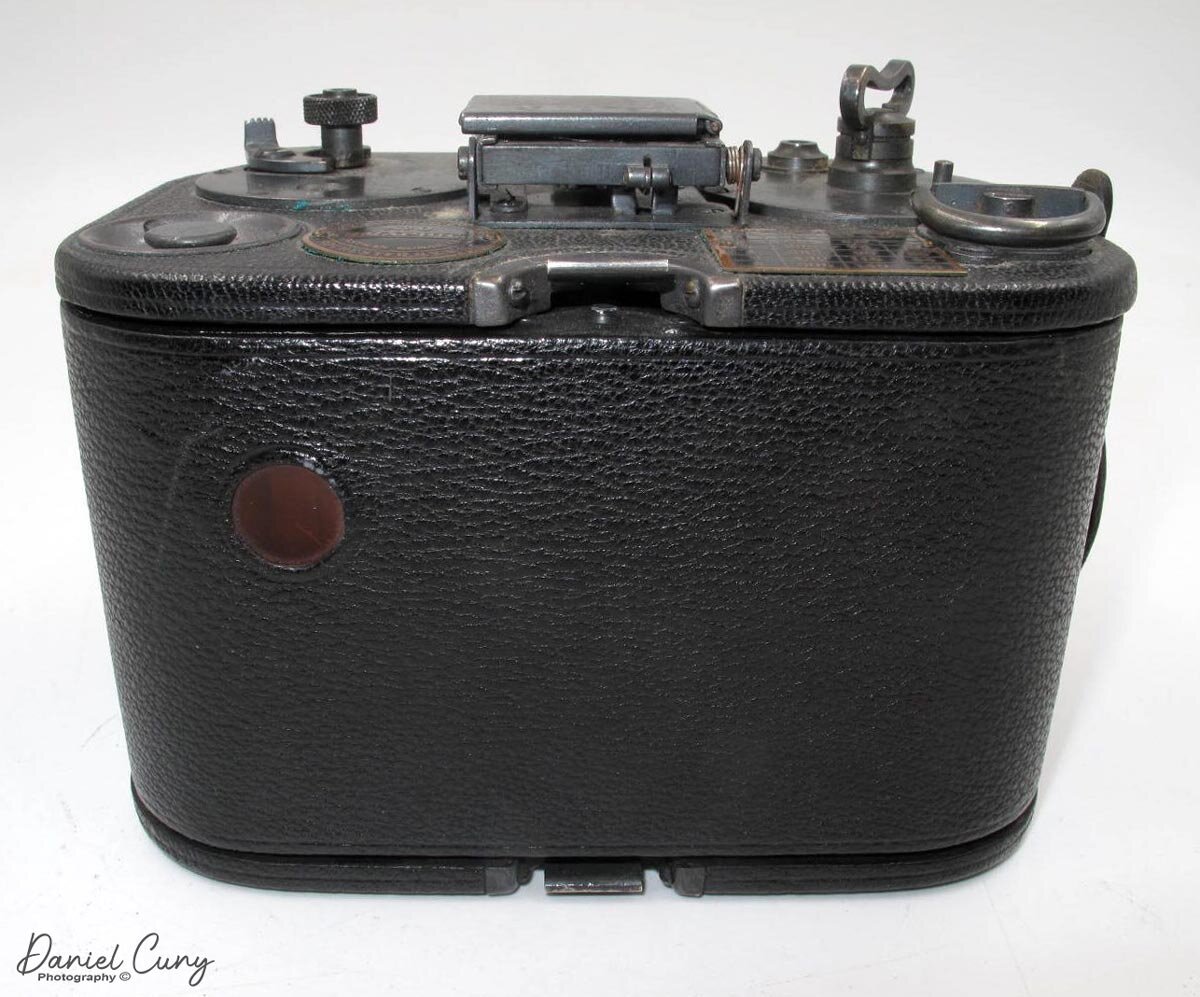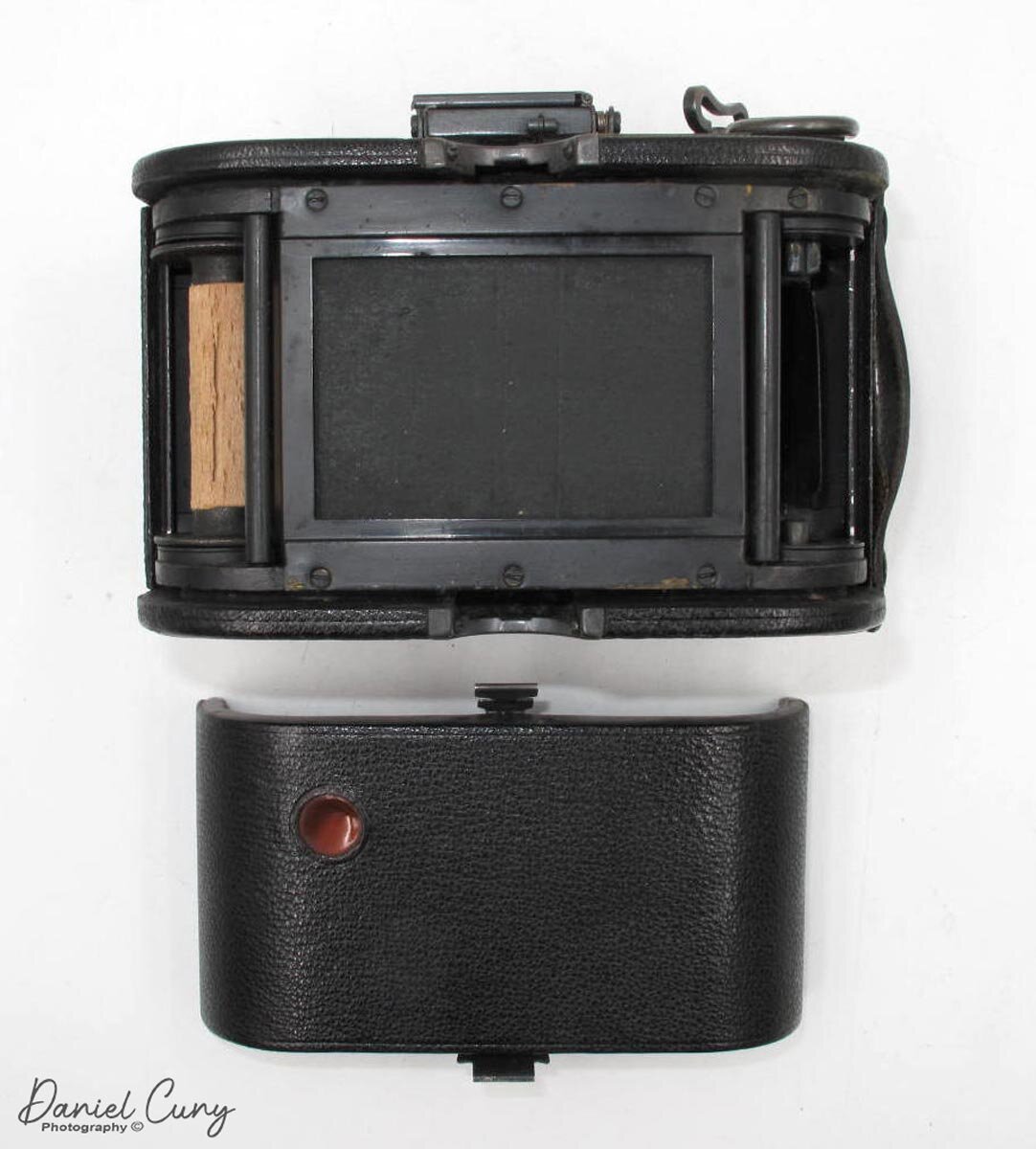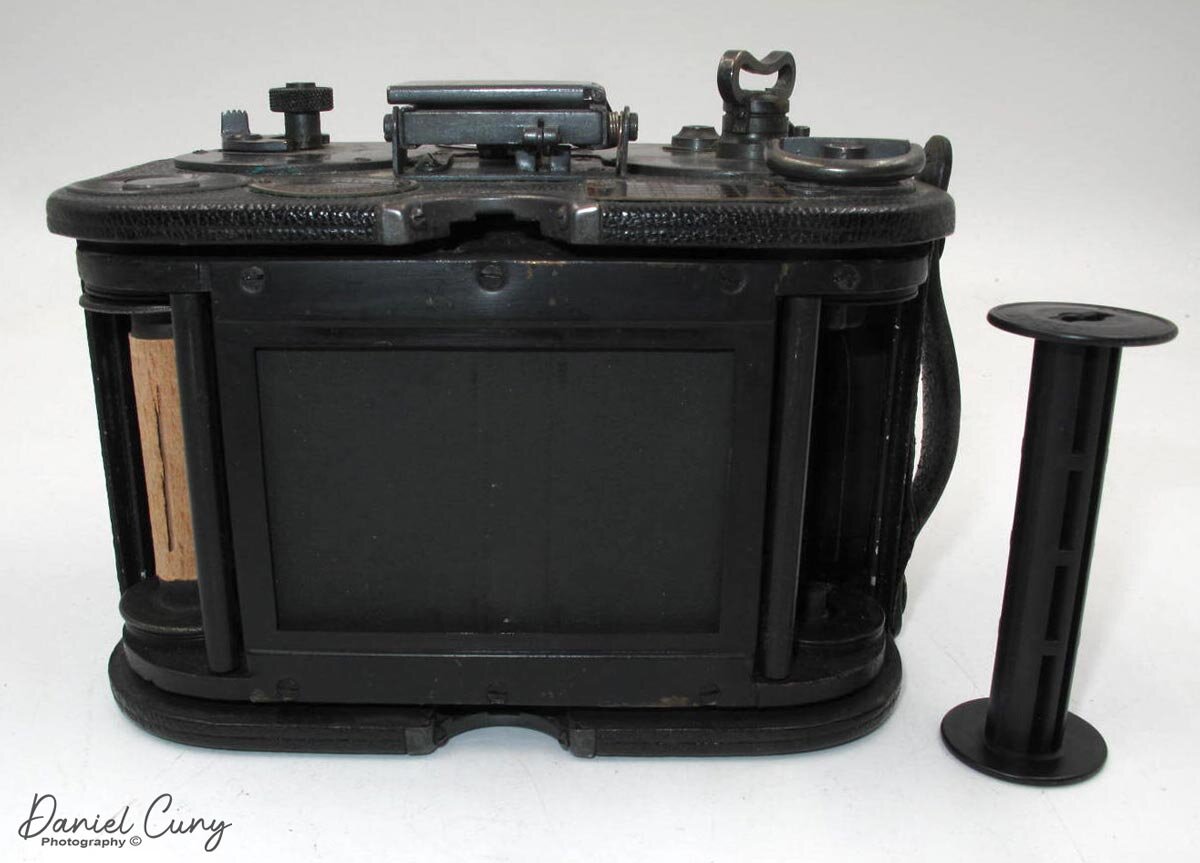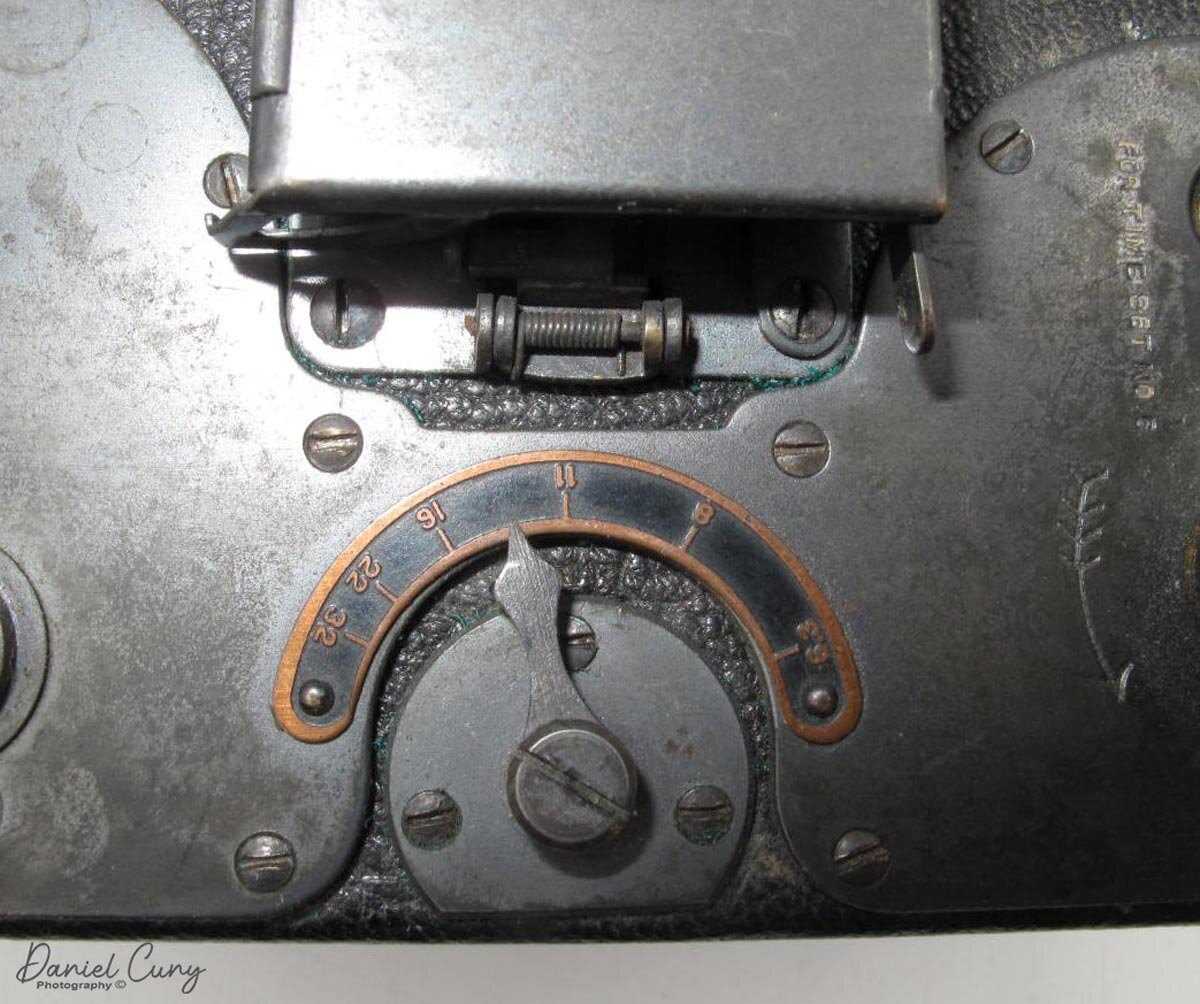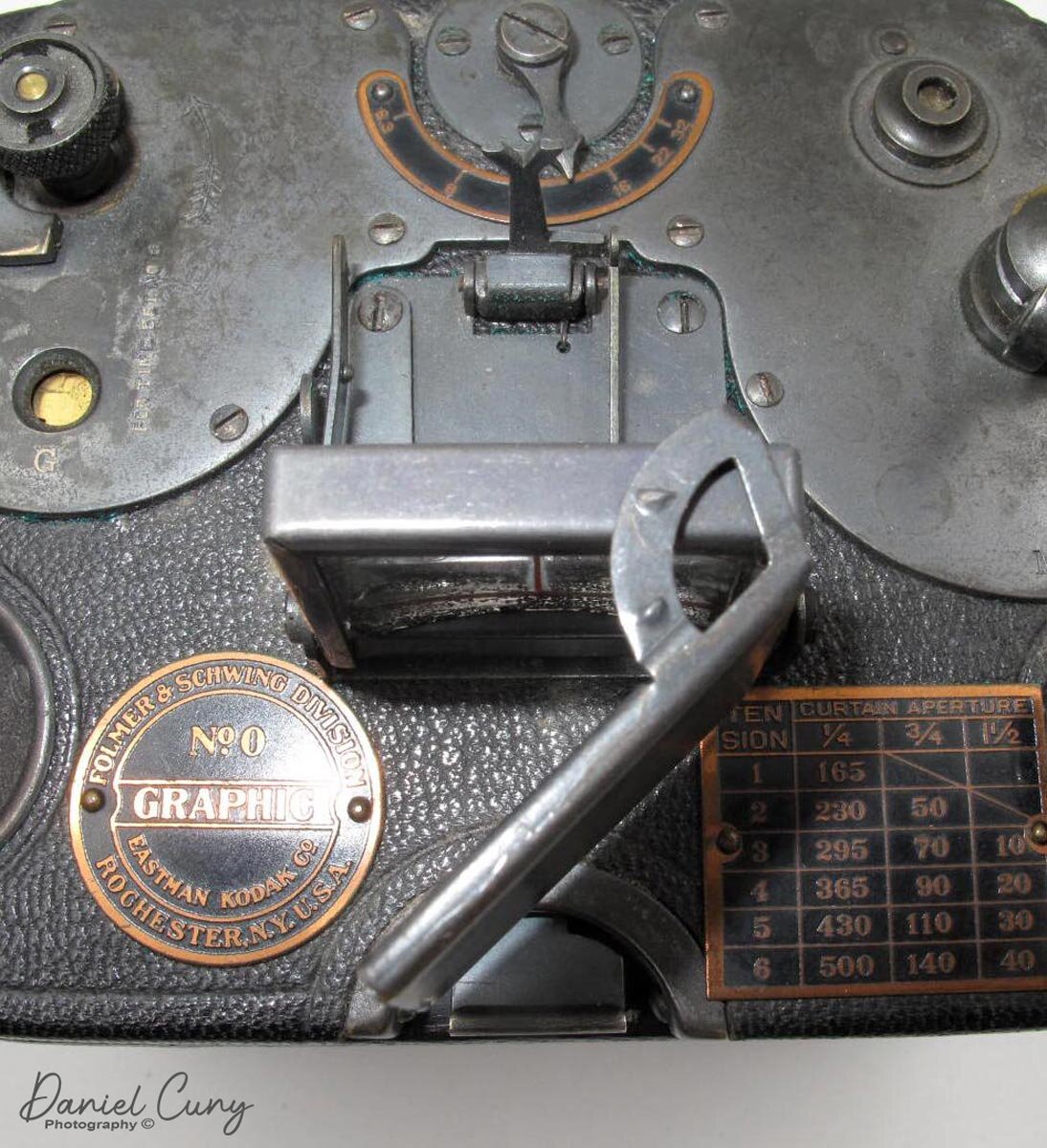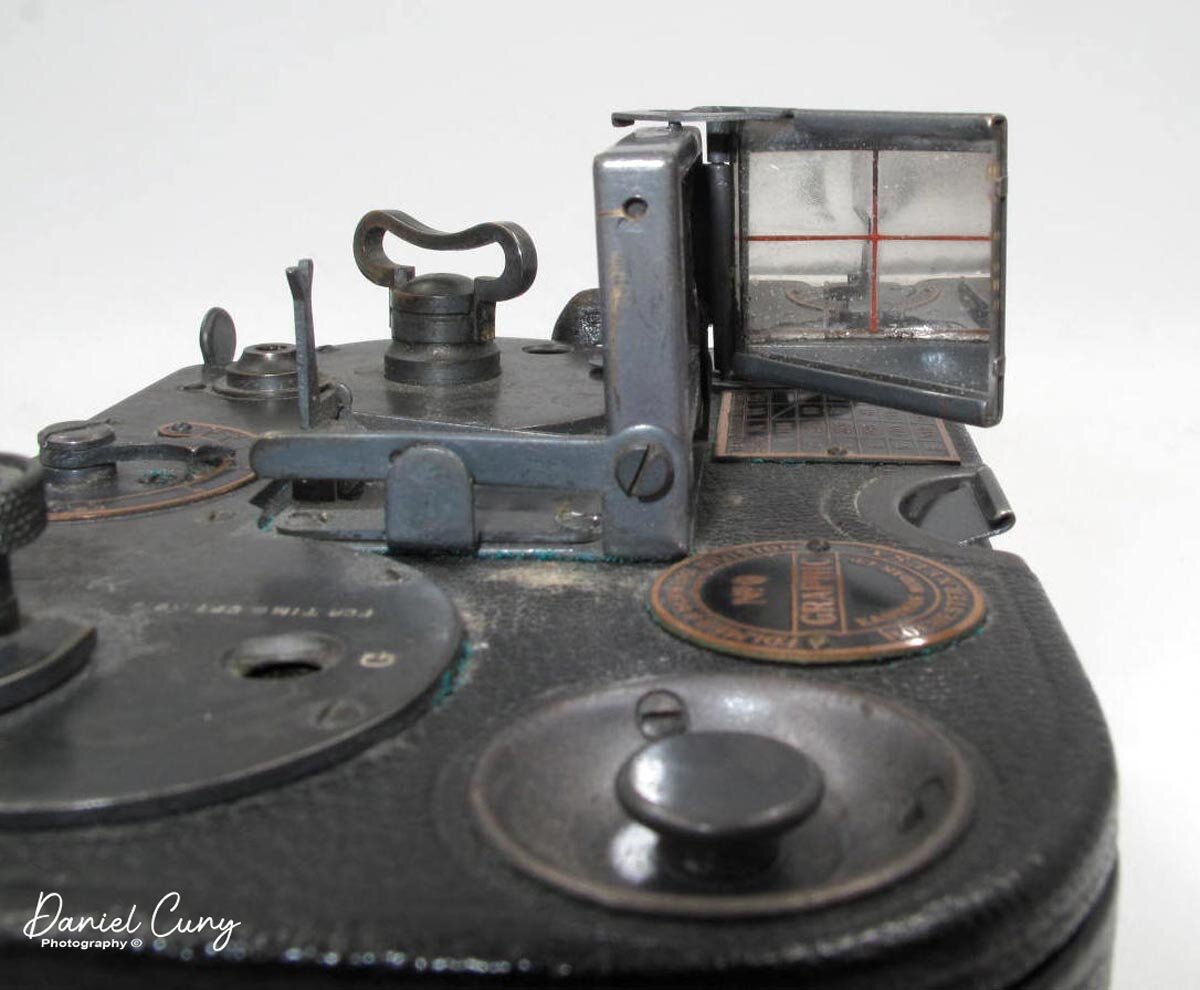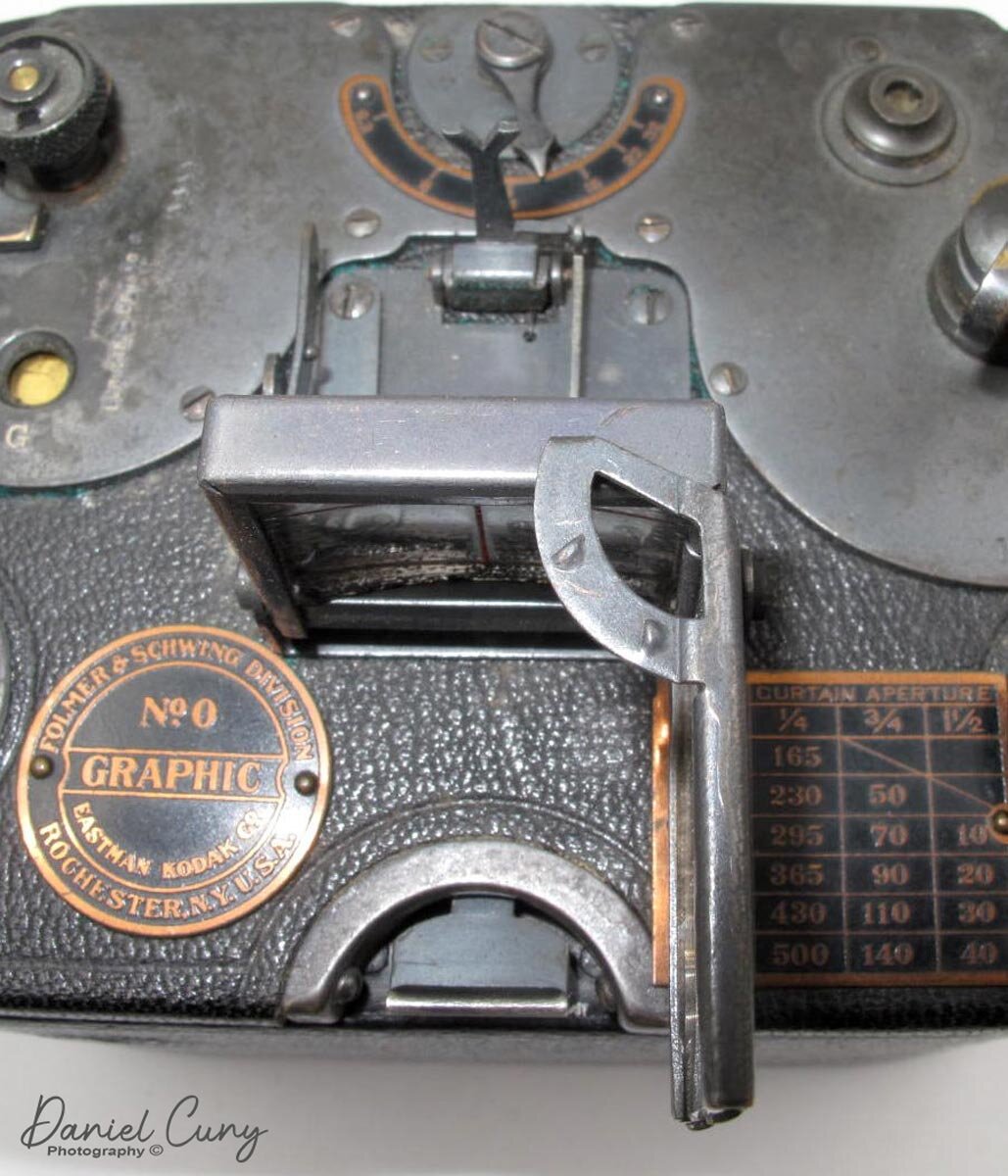In my opinion, the No. 0 Graphic camera is one of the real sexy models made. It's a small yet sophisticated, high-quality design and somewhat technical that it advanced camera manufacturing forward. The camera is a fixed focus camera made by Folmer & Schwing, a division of Eastman Kodak at the time, manufactured between 1909 and 1926.
Graphic No.0 Camera & Case
The Company
Folmer & Schwing, Mfg. Co. first started as a gas lamp manufacturing company. The company was started in 1887 by William F. Folmer and William E. Schwing. When the decline of gas lamp sales occurred in the 1890s, Folmer & Schwing moved into Bicycle and camera manufacturing. Their cameras first appeared in their 1896 catalog and their first Graphic camera in 1898, which you can see here. Mr. Folmer also introduced the photographic world to the very well-known Graflex cameras in 1898, known as the Graflex Reflex camera, a single lens and moving mirror (SLR). Looking at some of their later catalogs, it's interesting that there were so many bicycle-related cases, etc. You can see the No. 0 Graphic advertised here.
In 1905, Eastman Kodak purchased Folmer & Schwing Mfg. Co., and up until 1926, they were a division of Eastman Kodak. In 1926 the U.S. government forced Kodak to divest its professional division due to the Sherman Anti Trust Act. With no one buying Folmer & Schwing, they became Graflex Inc., which was an independently owned company up until 1958. After 1958, the company had a few other owners and was officially closed in 1973.
Top view of No. 0 Graphic camera
The Camera
Looking at the No. 0 Graphic, I like the intricacy of the top of the camera and the rest of the camera's simplicity. Looking at photos of the camera, I thought the camera would be larger than it is. The camera measures 5 1/4" wide by 3 3/4" tall, including the viewfinder, by 3 1/2" deep, and weighs 1 lb. 10.6 oz. without film. To open the lens, or I guess I should say to open the door to expose the lens as the lens is fixed focus, you press the thumb knob on the camera body's upper left as you face the lens. By pressing the knob back, the door to the lens opens. To close it. Press the button to the left of the lens, and the door closes. The camera has a Zeiss Kodak anastigmat lens, f6.3.
The camera uses a cloth focal-plane shutter system with shutter apertures (distances between shutter curtains) of 1/4, 3/4, and 1 1/2 inches. There is a tension regulator on the top of the camera that regulates the shutter speed and the shutter aperture used. There is a graph on the top of the camera showing what shutter speed the camera will fire at depending on the tension and shutter aperture used. Looking at the chart on the top of the No. 0 Graphic, the shutter speeds range from 1/10 to 1/500. Also on the top of the camera is the aperture setting, which varies from f6.3-f32. You move the pointer wheel to the desired setting.
The No. 0 Graphic takes six 1 5/8 x 2 1/2 inches on No. 0 F.P. Kodak roll film. Later the film was called Kodak 121 film, which you would load just like any roll film camera with the take-up spool on the right-hand side. To open the camera's back is simple, pinch the top and bottom springs and pull the camera back off. This method is similar to many of the Kodak Autographic cameras of this era.
The camera also incorporates an exciting viewfinder system, which allows for discreet photo taking. There is a mirror in the viewfinder which can be placed in either a 45-degree or 90-degree position. The 45-degree position enables the photographer to view from a 90-degree position from your subject. What they call it deceptive angles camera. You can also open the mirror to 90 degrees making the mirror even with the viewing plane to point it forward towards the subject. In the manual, which you can see here.
The camera I own still has the camera strap on the side and the fitted camera case. While the No.0 Graphic I have is missing the leather on the lens door, it's something I overlook as I generally display it with the door open. My camera is serial number 26602, embossed on the camera's bottom, just behind the tripod socket.
No. 0 Graphic camera in the fitted case.
Conclusion
The No. 0 Graphic is a prized camera in my collection, especially with how complete the camera is. The shutter is a bit slow, and since 121 film is no longer available, I might want to see if possibly something like 127 size film might work. The camera is small, and I love the quality they put into the design and display on the camera's top.
Thank you for taking some time from your busy schedules to look over this post, and I always love to hear from you. If you have any questions, comments, or concerns about this or any of the other cameras I've written about, please drop me a line.
Until next week, please be safe.

